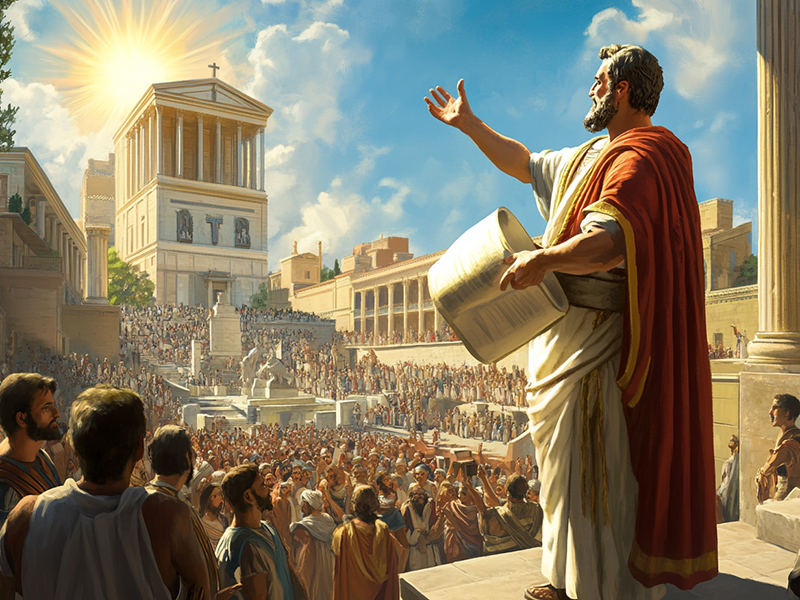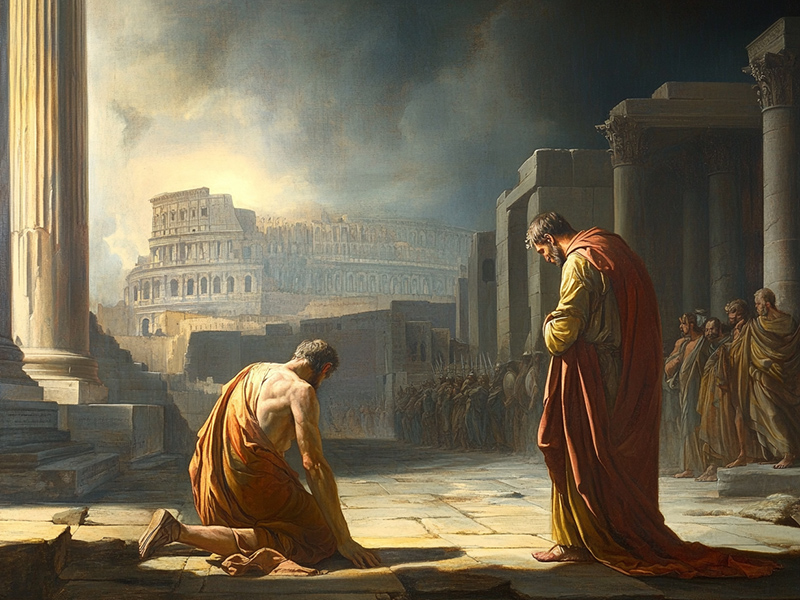Paul’s story reminds us that no one is beyond redemption, no matter how far they may have strayed.

The Miraculous Conversion of Saint Paul
Saint Paul, originally known as Saul of Tarsus, was a man whose early life stood in stark contrast to the mission he would eventually embrace. Born into a devout Jewish family in Tarsus, a major city in the Roman Empire, Saul was highly educated in the traditions of Judaism and the law, and zealous in his defense of it. As a young man, he became an ardent persecutor of the early Christian community, believing it to be a dangerous sect threatening Jewish religious integrity.
It was while he was on the road to Damascus, armed with letters of authority to arrest Christians, that his life took a dramatic turn. As Saul journeyed, suddenly a brilliant light from heaven flashed around him, and he fell to the ground. A voice called out to him, saying, “Saul, Saul, why do you persecute me?” Saul, confused and terrified, asked, “Who are you, Lord?” The voice responded, “I am Jesus, whom you are persecuting” (Acts 9:4-5). Blinded by this vision, Saul was led by his companions into Damascus, where for three days he remained without sight and did not eat or drink.
Meanwhile, in Damascus, a disciple named Ananias received a vision from the Lord, instructing him to go to Saul and restore his sight. Though initially hesitant because of Saul’s reputation as a persecutor, Ananias obeyed. Placing his hands on Saul, he said, “Brother Saul, the Lord—Jesus, who appeared to you on the road as you were coming here—has sent me so that you may see again and be filled with the Holy Spirit” (Acts 9:17). Immediately, something like scales fell from Saul’s eyes, and he could see again. He was baptized and became known as Paul, marking the beginning of his new life as an apostle of Christ.
This miraculous conversion is one of the most powerful testimonies of God’s grace. Paul’s story reminds us that no one is beyond redemption, no matter how far they may have strayed. His transformation from a fierce persecutor to a passionate advocate for the Gospel illustrates the boundless reach of God’s mercy and the transformative power of faith.

The Missionary Journeys of Saint Paul
After his conversion, Paul wasted no time in dedicating his life to spreading the message of Christ. He embarked on three major missionary journeys that would take him across vast regions of the Roman Empire, from Syria and Asia Minor to Greece and Rome itself. These journeys were filled with both triumphs and trials as Paul faced opposition, persecution, and even imprisonment for the sake of the Gospel.
Paul’s missionary work was groundbreaking not only in its geographic scope but in its inclusivity. While the early Christian movement had initially focused on Jewish communities, Paul felt a divine calling to preach to the Gentiles—the non-Jews who had previously been considered outside of God’s covenant. In doing so, Paul opened the doors of Christianity to the entire world, helping to establish the Church as a universal faith.
One of the most significant moments in Paul’s ministry occurred in Athens, where he preached at the Areopagus, a forum for public debate. Addressing the intellectual elite of the city, Paul spoke of the “unknown God” whom the Athenians worshiped in ignorance, revealing Him to be the Creator of the universe and the One who raised Jesus from the dead. Although some mocked him, others believed, and a small Christian community began to take root in this influential city.
Throughout his journeys, Paul’s letters to the early Christian communities provided guidance, encouragement, and theological insight. These letters—now known as the Pauline Epistles—form a significant portion of the New Testament and continue to shape Christian theology and practice to this day. In them, Paul expounded on the nature of salvation, the role of grace, the importance of faith, and the unity of the Church as the Body of Christ.

Paul’s Sufferings for the Gospel
Paul’s commitment to spreading the Gospel came at great personal cost. Throughout his ministry, he endured numerous hardships, including beatings, imprisonment, shipwrecks, and even stoning. In his second letter to the Corinthians, Paul wrote, “Five times I received from the Jews the forty lashes minus one. Three times I was beaten with rods, once I was pelted with stones, three times I was shipwrecked, I spent a night and a day in the open sea” (2 Corinthians 11:24-25). Despite these trials, Paul’s faith never wavered. He saw his sufferings as a participation in the sufferings of Christ, and his endurance became a powerful witness to the strength of his conviction.
One of the most dramatic moments in Paul’s life occurred during his final journey to Rome. After being arrested in Jerusalem and held in custody for several years, Paul exercised his right as a Roman citizen to appeal to Caesar. On the way to Rome, the ship carrying Paul and other prisoners was caught in a violent storm and eventually wrecked on the island of Malta. Even in the face of disaster, Paul remained calm, encouraging those around him and trusting in God’s providence. His courage and faith inspired many, and when he finally reached Rome, he continued to preach the Gospel, even under house arrest.
The Writings of Saint Paul
Saint Paul’s letters are among the most influential writings in the history of Christianity. Addressed to early Christian communities in cities like Corinth, Ephesus, Philippi, and Rome, these letters provided doctrinal instruction, pastoral guidance, and personal encouragement. In them, Paul articulated key aspects of Christian theology, such as the nature of Christ, the meaning of salvation, and the role of grace.
One of Paul’s central teachings was that salvation comes through faith in Christ and not through works of the law. In his letter to the Romans, Paul wrote, “For we maintain that a person is justified by faith apart from the works of the law” (Romans 3:28). This teaching emphasized that salvation is a gift from God, available to all who believe in Jesus Christ, regardless of their background or status.
Paul also wrote extensively about the unity of the Church, describing it as the Body of Christ, with each member playing a unique and valuable role. In his letter to the Corinthians, Paul explained, “Now you are the body of Christ, and each one of you is a part of it” (1 Corinthians 12:27). This vision of the Church as a diverse yet unified community remains a foundational principle of Christian identity.

The Martyrdom of Saint Paul
According to tradition, Paul was martyred in Rome during the reign of Emperor Nero. After being imprisoned and tried for his faith, Paul was sentenced to death by beheading—a merciful form of execution reserved for Roman citizens. His martyrdom marked the end of a life wholly dedicated to the service of Christ, but his legacy as the apostle to the nations continues to inspire believers to this day.
Feast Days and Celebrations
- Feast of Saints Peter and Paul – June 29
This major feast celebrates the martyrdom of both Saint Peter and Saint Paul, two of the most significant figures in the early Church. Their combined witness symbolizes the foundational roles they played in establishing the Christian faith—Peter as the leader of the apostles and Paul as the missionary to the Gentiles. - The Conversion of Saint Paul – January 25
This feast commemorates Paul’s dramatic conversion on the road to Damascus. It is a day of reflection on the power of God’s grace to transform even the most unlikely individuals into instruments of His divine plan.
Each of these feast days offers an opportunity to reflect on the life and mission of Saint Paul, whose zeal for the Gospel and unwavering faith continue to guide and inspire the Church today.



